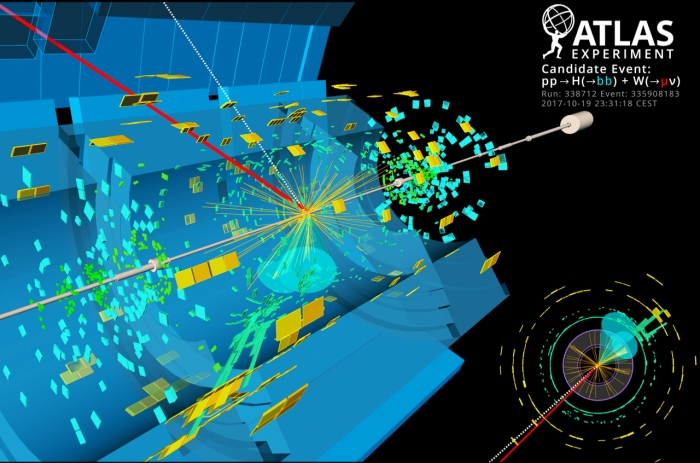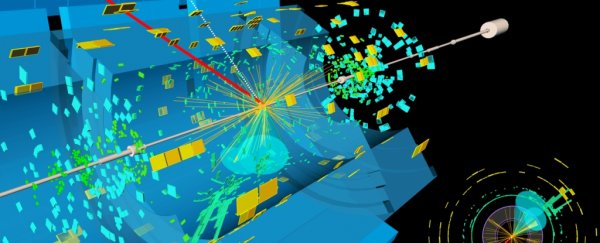Six years after the strange, elusive Higgs boson particle was discovered, scientists working with the world's largest particle accelerator have finally observed its mysterious, yet most common, decaying process.
Using data from the Large Hadron Collider, physicists caught the boson decaying into two smaller particles - a bottom quark and its antimatter equivalent, an antibottom quark.
The Standard Model of particle physics predicts that a Higgs boson will decay into bottom quarks - the second-heaviest of the quark flavours - about 60 percent of the time.
Physicists have been trying to observe this process, because it will either support the Standard Model, or show that it's insufficient - requiring a search for new physics to explain the discrepancy.
The problem is that the process is extraordinarily hard to catch in action. The Higgs boson is produced by a collision between two protons. If two gluons inside the protons fuse and produce two top quarks, these top quarks can recombine into a Higgs boson.
This particle exists for about one-septillionth of a second before it decays into less massive particles. It's the detection of these particles from which particle physicists infer the existence of the Higgs boson.
There are several ways these particles decay, including into a fermion-antifermion pair, a pair of photons, or a pair of gauge bosons, which are relatively easy to observe.
But with bottom quarks, it gets a little trickier, because every proton-proton collision produces a shower of subatomic particles, including bottom quarks. These then rapidly decay into other particles.
 (ATLAS/CERN)
(ATLAS/CERN)
Since the Higgs boson's existence is so brief, it's been impossible to determine whether the bottom quarks detected were the result of a decaying Higgs boson, or of proton collision background processes.
To find the decay, two collaborations - ATLAS and CMS - combined data from the first and second runs of the Large Hadron Collider, and analysed it to try and find bottom quarks from the particle showers they produced. Then they had to trace those bottom quarks back to a Higgs boson.
"Finding just one event that looks like two bottom quarks originating from a Higgs boson is not enough," said Chris Palmer, a physicist at Princeton University who worked on the CMS analysis.
"We needed to analyse hundred of thousands of events before we could illuminate this process, which is happening on top of a mountain of similar-looking background events."
However, there are a few particles that are identifiable by-products of the Higgs boson production mechanism.
"We used these particles to tag potential Higgs events and separate them out from everything else," Palmer explained. "So we really got a two-for-one deal with this analysis because not only did we find the Higgs decaying to bottom quarks, but we also learned a lot about its production mechanisms."
And they confirmed - again - the Standard Model of particle physics, with which the measured rate of decay matched.
It's a result that opens a new possibility for scientists to study the behaviour of the Higgs boson in closer detail, and how it interacts with other matter, plus whether it could interact with particles that haven't been discovered yet (such as dark matter).
The next step in the research is to refine the measurements to study the decay mode in much higher resolution.
Both collaborations have submitted their papers for publication in science journals, and in the meantime can be found on arXiv: the CMS research is available here, and the ATLAS research is available here.
